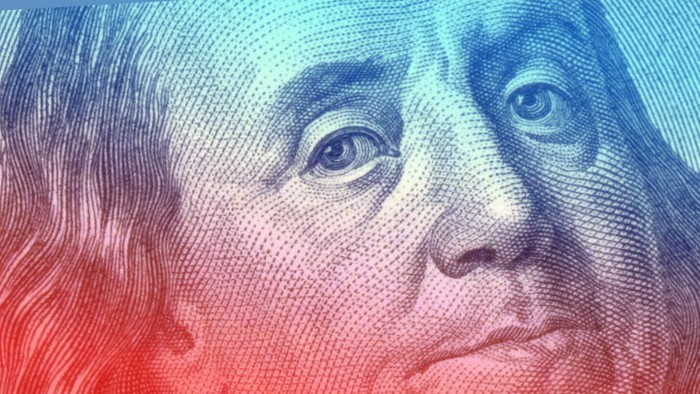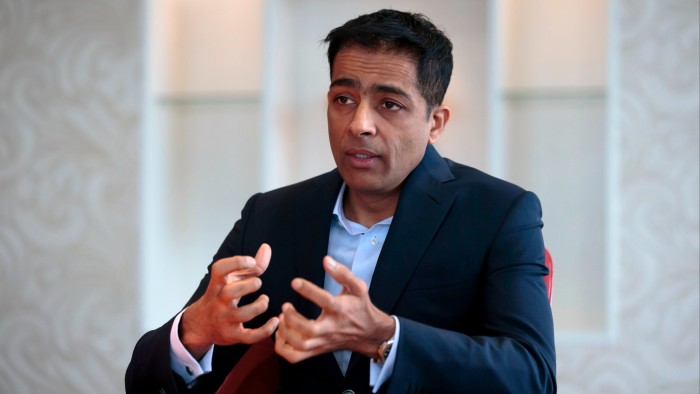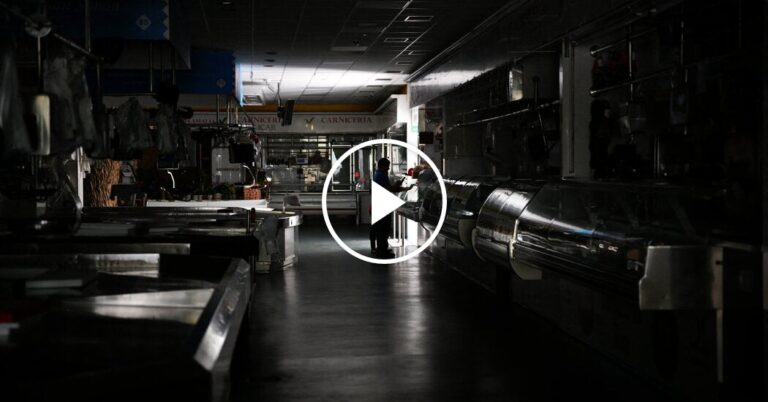
This article is an on-site version of our Unhedged newsletter. Premium subscribers can sign up here to get the newsletter delivered every weekday. Standard subscribers can upgrade to Premium here, or explore all FT newsletters
Good morning. The S&P 500 fell 2.2 per cent yesterday, after it was revealed US export controls would restrict Nvidia’s sales. Info tech shares fell hard, as investors priced in the possibility of new artificial intelligence restrictions; the Philadelphia Semiconductor index fell 4.1 per cent, with losses for all 30 of its constituents, led by Advanced Micro Devices (down 7.4 per cent) and ASML (down 7 per cent). Email me: aiden.reiter@ft.com.
Treasury yields and the term premium
Of all the ruckus in markets over the past few weeks, the most concerning part was the rapid rise in Treasury yields, and the momentary positive correlation between equity and Treasury prices. Indeed, by most accounts, this was what caused President Donald Trump to initiate the 90-day pause on tariffs.
Treasury yields — which rise when prices fall — are flat now, but remain elevated, as there are still spectres haunting the bond market. Last week’s unwind of various leveraged trades was alarming, and has traders on edge. Investors are worried about rumours of foreign purchasers stepping away from Treasuries. And some market watchers are afraid of potential brinkmanship around the debt ceiling later this year, or that the Trump administration may use unorthodox debt tactics in trade negotiations. From Yesha Yadav, a law professor focused on financial regulation at Vanderbilt University:
For some deep pessimists, there is a genuine stress that this administration could threaten debt default to distract from their actions, or that they could pause debt repayments to enact leverage . . . Given how staggering the tariff policy changes have been, it’s anyone’s guess as to how the next steps are likely to play out, and what the US’s debt management policies will be.
Unhedged remains more optimistic. Though foreign investors could potentially turn away from US assets, recent Treasury auctions suggest there is still a healthy global appetite for US debt. Republican alignment around Trump’s budget plans last week increases the odds that the debt ceiling will be raised without incident. And, though the president’s tariff moves are hard to forecast, he did cave when the bond market panicked; pausing payments would be very rash.
Last week, we were hesitant to over-read Treasuries’ moves, given how much panicked selling was taking place. But, now that things have calmed down, it is worth doing a postmortem on the subcomponents of the Treasury yield — with the caveat that, even with the benefits of hindsight, not all moves can be easily explained.
The Treasury yield has three crucial components: the real yield, or the yield investors get above inflation; break-even inflation, the market’s forward expectations for consumer price rises; and the term premium, or the extra bit of yield that investors require to hold longer duration, often used as a proxy for uncertainty or political risk. Real yields fell initially after “liberation day”, but started surging in the days after, accounting for most of the rise in the 10-year Treasury yield:

This is the subcomponent that is hardest to read into. The jump could have been from levered positions unwinding, or potentially from a drawdown in foreign investment, or both. However, even at their post-tariff peak, real yields were still below their highs from late last year, when investors started pricing in a surge in growth from Trump’s policies.
Meanwhile, break-even inflation remains relatively low, and has been trending lower since “liberation day” and the 90-day pause:

That’s a bit surprising, since tariffs ought to flow through to higher prices in the US. The market may be underpricing the inflation risk, or perhaps thinks a slowdown is more likely than stagflation. Or, when looked at together with rising real yields, it might be a vote of confidence in the Federal Reserve.
Though all of the subcomponents have cooled off, the term premium remains particularly elevated — suggesting high political uncertainty among investors. Three models are typically used to measure the term premium, all developed by economists at the Fed: the Adrian-Crump-Moench model (“ACM model”), the Kim-Wright model, and the Christensen-Robenson model (“CR” model). As our colleague Toby Nangle has noted, all three have issues. But, even so, looking at the broader trend shows how our current moment of uncertainty compares to past panics:

By all three measures, the term premium is high, but not disastrously so. The term premium was higher in the years following the dotcom bubble bursting, during the great financial crisis, and in 2013-2014 during the “taper tantrum”, when the Fed announced it would pause quantitative easing and the bond market panicked. It’s worth noting, however, that all three of those events were based on realised fears: two recessions and a stated central bank policy. The market’s current concerns over the growth impacts of tariffs, upcoming debt debates in Congress, and the rumoured pullbacks by foreign Treasury buyers are still speculative. Markets are not always the best at gauging political risk.
There is a more direct measure of the term premium, which avoids some of the models’ pitfalls. It involves subtracting the yield on three-year one-month inflation swaps, essentially a risk-free asset linked to short-to-medium term rate expectations, from the 10-year to 10-year forward swap, or the expected yield on a 10-year Treasury note issued 10 years from now, an estimate of future rates that accounts for the current yield curve. The gap between the two is a direct measure of how much extra yield investors require to hold longer-dated coupons. By this measure, the term premium is also high and trending up, but is not as high as previous bouts of turmoil:

However, Brij Khurana, portfolio manager at Wellington Management, shared with me that the previous periods of high term premia are somewhat deceiving:
When the Fed cuts to zero [which is where rates were from 2008-2014], yield curves are steep. That means that when there is any rise on the back end of the curve, the [term premium] measure hits higher levels . . . This was not the case in the 2007 environment, when we had high policy rates but an inverted curve. What is interesting about now is we have high policy rates, and a very steep curve. To me, that suggests there are higher than normal fears in the bond market around future issuance and foreign selling.
Khurana argues it is best to look at the gap measure through a linear regression, which shows that the current term premium is, indeed, particularly high — well above the average, and on par with periods such as the taper tantrum.
To some investors, that might be further proof that what we are seeing is a changing global regime. But, once again, Unhedged is reluctant to draw any firm conclusions without more data. What we will say is that, even without Trump’s tariffs and fears of a slowdown, this was already set to be a jittery year in Treasury markets. The proposed fiscal impulse is low by recent standards, while the US’s debt and debt-servicing costs are historically high. Meanwhile, Treasury secretary Scott Bessent is making a one-way bet on Treasury yields — which may not pan out for taxpayers.
One Good Read
Misfit toys.
FT Unhedged podcast

Can’t get enough of Unhedged? Listen to our new podcast, for a 15-minute dive into the latest markets news and financial headlines, twice a week. Catch up on past editions of the newsletter here.
Recommended newsletters for you
Due Diligence — Top stories from the world of corporate finance. Sign up here
Free Lunch — Your guide to the global economic policy debate. Sign up here






